Are you tired of dealing with a clogged kitchen drain that causes inconvenience and frustration? Look no further, as this article will provide you with practical tips and solutions to fix the problem yourself. Say goodbye to pricey plumber bills and hello to a smoothly-running kitchen sink.
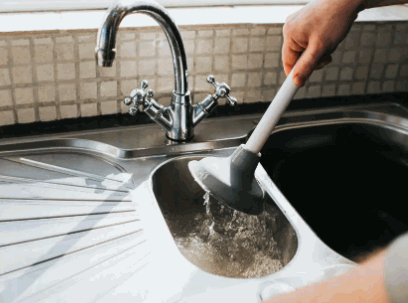
What Causes Kitchen Drain Clogs?
Dealing with a clogged kitchen drain can be a frustrating and messy experience. But before you can fix it, it’s important to understand what causes these clogs in the first place. In this section, we’ll discuss the three main culprits behind kitchen drain clogs: grease and oil build-up, food particles and debris, and soap scum and mineral deposits. By identifying the root cause of the clog, you can take the necessary steps to prevent it from happening again in the future.
1. Grease And Oil Build-Up
- Before washing dishes, make sure to scrape off any excess grease and oil.
- Use a strainer to catch any grease and oil and prevent it from entering the drain.
- To break down any buildup of grease, regularly flush the drain with hot water and vinegar.
To prevent clogs in your kitchen drain caused by grease and oil buildup, it is important to practice proper disposal habits and perform regular maintenance. Make sure to dispose of grease and oil in designated containers and regularly flush the drain with hot water and vinegar to prevent buildup.
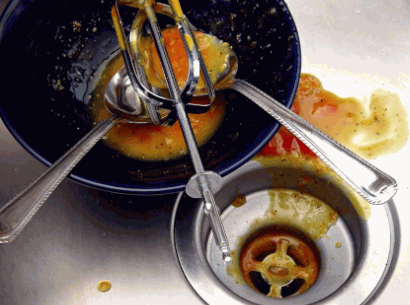
2. Food Particles And Debris
- Scrape food scraps into the trash before rinsing dishes.
- Use sink strainers to catch Food Particles and Debris.
- Avoid putting large chunks of food down the disposal.
Pro-tip: Regularly flush the drain with hot water to prevent Food Particles and Debris buildup and keep the drain clear.
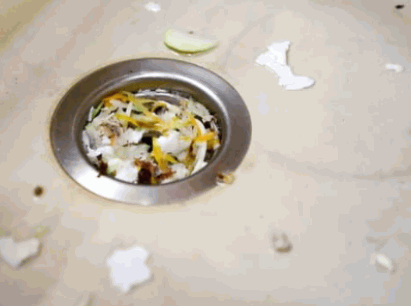
3. Soap Scum And Mineral Deposits
- To effectively dissolve soap scum and mineral deposits, create a solution using vinegar and baking soda.
- With a sponge or brush, scrub the affected area to remove the loosened residue.
- Rinse the drain thoroughly with hot water to flush away the dissolved soap scum and mineral deposits.
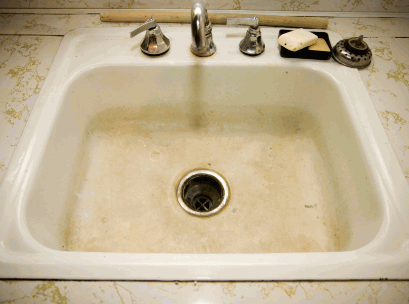
How To Prevent Kitchen Drain Clogs?
A clogged kitchen drain can be a major inconvenience, causing slow drainage or even complete blockage. But instead of waiting for a clog to happen, why not take proactive measures to prevent it? In this section, we will discuss three simple steps to prevent kitchen drain clogs. First, we will explore the proper disposal of grease, a common culprit of clogs. Then, we will discuss the use of a drain cover to catch any debris before it can cause a blockage. Finally, we will touch on the benefits of running hot water after each use to keep your drain clear and flowing smoothly.
1. Dispose Of Grease Properly
- Do not pour grease down the drain.
- Collect grease in a container and dispose of it in the trash.
- Use a paper towel to wipe residual grease before washing dishes.
Properly disposing of grease is crucial in preventing clogs and keeping your kitchen drain flowing smoothly. Remember, taking the time to properly dispose of grease goes a long way in preventing plumbing issues.
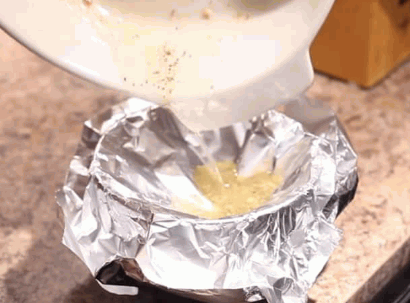
2. Use A Drain Cover
- When selecting a drain cover, be sure to choose one that fits securely over the drain opening.
- Make sure the cover has a fine mesh to effectively catch small debris and prevent it from entering the drain.
- Regularly clean the drain cover to remove any trapped debris and ensure proper drainage.
The use of drain covers can be traced back to ancient civilizations, as early versions were employed in Roman public baths to prevent debris from clogging the drainage systems.
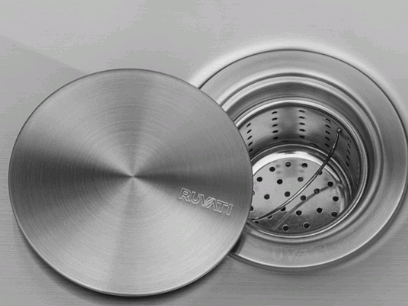
3. Run Hot Water After Each Use
Running hot water after each use is an effective way to prevent kitchen drain clogs. Here are the steps:
- After using the sink, let hot water run for a few minutes to help dissolve and flush away any accumulated grease and food particles.
- Ensure the water temperature is sufficiently hot to effectively dissolve grease and prevent it from solidifying in the pipes.
- Repeat this practice after every use to maintain a clear and unclogged kitchen drain.
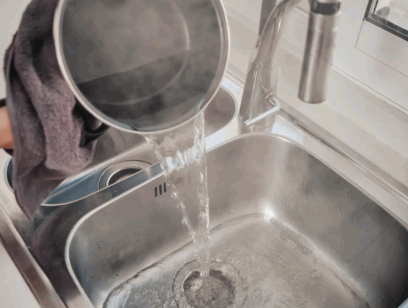
What Are The Signs Of A Clogged Kitchen Drain?
A clogged kitchen drain can be a major inconvenience in any household. But how do you know when your kitchen drain is clogged? In this section, we will discuss the tell-tale signs of a clogged kitchen drain, including a slow-draining sink, foul odors, gurgling noises, and water backing up. By recognizing these signs, you can take action to clear the clog before it becomes a bigger issue. So, let’s dive into the signs of a clogged kitchen drain and learn how to fix it.
1. Slow Draining Sink
- Check for any visible debris or blockage near the drain opening to ensure nothing is obstructing the flow of water in your slow-draining sink.
- Use a plunger to create pressure and dislodge any clogs causing the slow drainage.
- If the issue persists, try using a plumbing snake to break up and remove the blockage in your slow-draining sink.
- Consider using a natural solution like baking soda and vinegar to help dissolve the clog in your slow-draining sink.
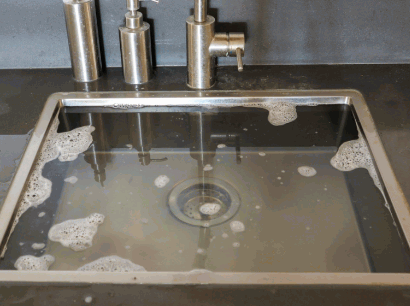
2. Foul Odors
Foul odors in the kitchen drain are commonly caused by a buildup of food particles and grease. These residues can decompose, resulting in unpleasant smells. To combat this problem, try pouring a combination of hot water and vinegar down the drain, or utilize baking soda to neutralize the odors. Additionally, enzyme-based cleaners can be effective in breaking down the organic matter responsible for the foul odors.
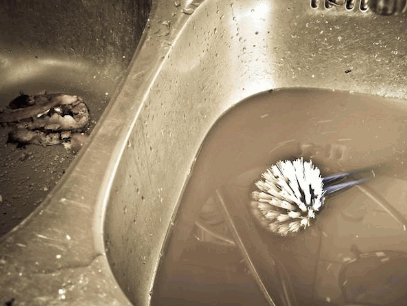
3. Gurgling Noises
- Check for any blockage: Gurgling noises may be a sign of a blockage in the drain, such as food or grease accumulation.
- Run hot water: Pouring hot water down the drain can help clear minor blockages and reduce gurgling sounds.
- Use a mixture of baking soda and vinegar: This natural solution can break down organic materials that may be causing the gurgling noises.
Did you know? Gurgling noises in the drain can also be caused by air bubbles trapped in the pipes.
4. Water Backing Up
- Assess the severity of the water backup to determine if professional intervention is necessary.
- If the backup is minor, attempt to dislodge the clog using a plunger.
- For more stubborn backups, consider using a natural solution, such as a mixture of baking soda and vinegar, to break down the clog.
- If the clog persists, use a plumbing snake to physically remove the blockage.
How To Fix A Kitchen Drain Clog?
Dealing with a clogged kitchen drain can be a major inconvenience and disruption to your daily routine. Whether it’s due to food scraps or grease build-up, a clogged drain can quickly become a headache. But before you reach for harsh chemicals or call a plumber, try some simple and natural solutions first. In this section, we will go over the step-by-step process of how to fix a kitchen drain clog, including using a plunger, trying a natural solution, using a plumbing snake, and when it’s time to call in a professional plumber.
1. Use A Plunger
- Place the plunger into the drain and make sure it creates a tight seal around the opening.
- Vigorously push the plunger up and down to remove the clog.
- Keep plunging until the water begins to drain smoothly.
Pro-tip: To improve suction, apply a layer of petroleum jelly around the rim of the plunger to create a tighter seal.
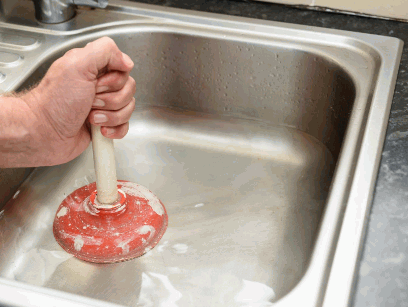
2. Try A Natural Solution
- Pour boiling water down the drain to dissolve grease buildup.
- Mix equal parts of vinegar and baking soda; pour the mixture down the drain, wait for 15 minutes, then rinse with hot water.
- Use enzymatic drain cleaners for organic clogs.
Fact: Vinegar and baking soda are effective in clearing minor kitchen drain clogs due to their natural cleaning properties.
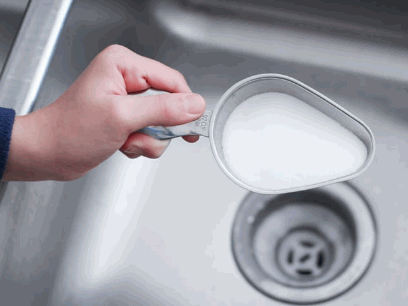
3. Use A Plumbing Snake
Using a plumbing snake to clear a kitchen drain clog involves the following steps:
- Insert the snake: Gently insert the head of the plumbing snake into the drain until you feel resistance.
- Rotate the snake: Once you encounter the blockage, rotate the snake’s handle to break through and dislodge the clog.
- Withdraw the snake: Slowly withdraw the snake from the drain, bringing the clog out with it.
- Flush the drain: Run hot water down the drain to clear any remaining debris.
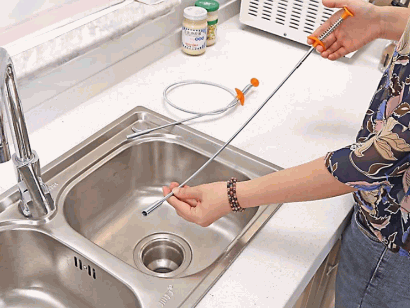
4. Call A Professional Plumber
- Assess the severity of the clog and determine if it requires professional intervention.
- Research and hire a licensed and experienced plumber.
- Communicate the issue thoroughly to the plumber for an accurate assessment.
- Provide access to the affected areas and follow any post-service recommendations from the professional.
Pro-tip: Regularly monitor your drains and address early signs of blockage to prevent major issues, reducing the need to call a professional plumber.
How To Maintain A Clear Kitchen Drain?
A clogged kitchen drain can be a major inconvenience, causing water to back up and making it difficult to wash dishes or dispose of food scraps. To avoid this issue, it’s important to maintain a clear kitchen drain. In this section, we will discuss three key methods for keeping your kitchen drain free of clogs: regularly cleaning the drain, using enzyme-based cleaners, and scheduling professional drain cleaning. By implementing these practices, you can prevent clogs and ensure your kitchen drain runs smoothly.
1. Regularly Clean The Drain
- Make sure to regularly clean the drain by removing debris and food particles using a drain strainer or basket.
- To prevent buildup, pour boiling water down the drain to dissolve and flush away any accumulated grease and soap scum.
- For thorough cleaning and deodorization, use a mixture of baking soda and vinegar on the drain.
2. Use Enzyme-based Cleaners
- Read and follow the instructions on the enzyme-based cleaner product label.
- Pour the recommended amount of the cleaner into the drain.
- Allow the cleaner to sit and work for the specified time.
- Rinse the drain with hot water to remove any remaining debris and the cleaner.
Enzyme-based cleaners offer an eco-friendly and effective solution to break down organic matter in the drain, preventing clogs and odors.
3. Schedule Professional Drain Cleaning
- Research local plumbing companies and read reviews before scheduling a professional drain cleaning.
- Make sure the company is licensed and insured to ensure high-quality service.
- Request a cost estimate and compare it with other service providers in your area.
- Inquire about the cleaning methods and equipment used to ensure thorough drain maintenance.
- Pro-tip: Regularly scheduling professional drain cleaning can help prevent major clogs and save you from costly repairs.
Dig Deeper: How To Clean Drain On Dishwasher
